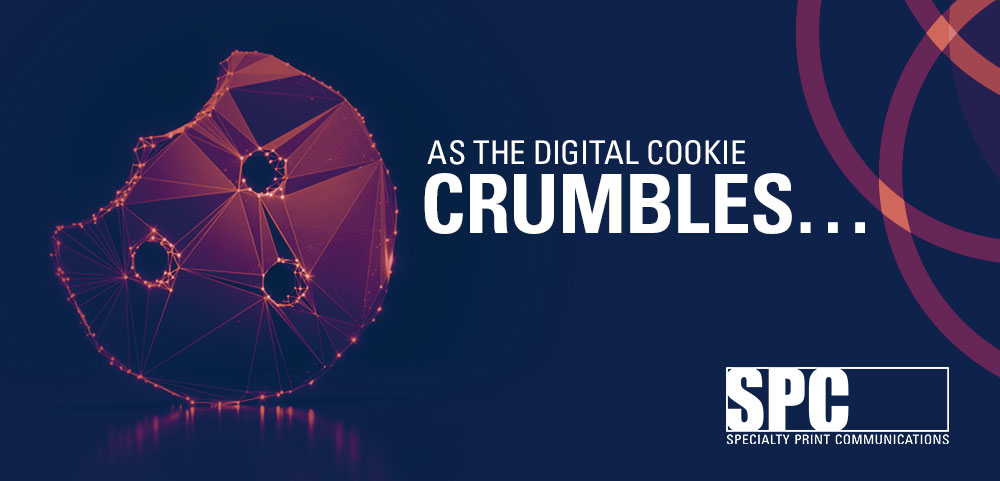
Question #1: What are digital cookies?
Digital cookies are text files with small pieces of data used to identify your computer when you visit a website. This data is labeled with an ID unique to you and your computer. Cookies let websites remember you, your website logins, shopping carts and preferences. They can also be used to serve you ads after you leave the website.
First-party cookies are small text files saved on your web browser which are triggered when you visit a website. They improve user experience by doing things like saving your language preferences or populating web forms.
Third-party cookies are created by websites other than the website you are visiting. These are the cookies used for “allowed” browser tracking, retargeting and serving digital ads.
Are there second-party cookies? Kind of. These are someone else’s first-party cookies.
Question #2: What is happening with cookies?
Online privacy has been a widely debated topic in recent years. Overall, consumers want increased privacy and control over how their data is used. In response to these privacy demands, Google announced it would stop supporting the use of third-party cookies by 2023. Safari and Firefox have already blocked third-party cookies.
Privacy concerns aside, cookie-based targeting is outdated technology that is fraught with fraud and non-human traffic that greatly skews and obscures actual performance (i.e. bots). Marketers are wasting money on impressions that never reach a person. It is indeed time for the cookie to crumble.
Question #3: What does this mean for marketers?
In short, marketers will need to find new sources of data or new targeting methods. Some strategies include:
Contextual Advertising – Think of contextual advertising as the online equivalent to magazine advertising. If I am marketing a luxury brand, I might buy ads on a travel website. If I sell golf clubs, buying ad space on golf.com would make sense.
Better Utilize First-Party Data – At SPC, we can take physical addresses and/or emails from your CRM and onboard them as a digital audience. Your customers and prospects then receive your targeted display messaging online. The process can also flow the other direction. We can capture your website visitors IP addresses and send them offline direct mail and email.
Federated Learning of Cohorts (FloC) – Set to go live in 2023, FLoC is Google’s response to tracking without cookies. FLoC allows marketers to target users who share similar online behaviors. These groups, called cohorts, would change as the users’ behaviors within them changes. While this technology allows marketers to reach consumers based on patterns of behavior, it does not allow for targeting on an individual level.
Finally…Consider new media types!
Digital advertising is a great tool, but research shows that it works best as part of a broader marketing strategy. If your organization relies heavily on cookie-based digital advertising, maybe this is a good opportunity to test other channels like direct mail, streaming video, or augmented reality as part of your marketing mix.
Contact your SPC Representative to learn how you can continue to engage with your target audience.
Greg Ward
Strategic Accounts Executive, SPCFuel










